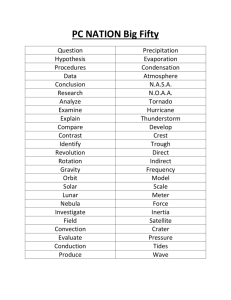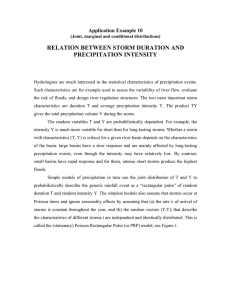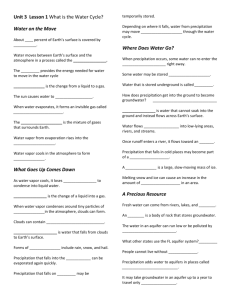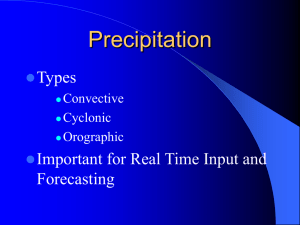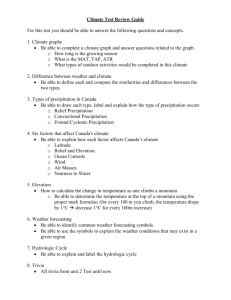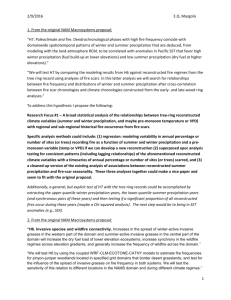03 EL STORE Lab - Evaluating California Storms
advertisement
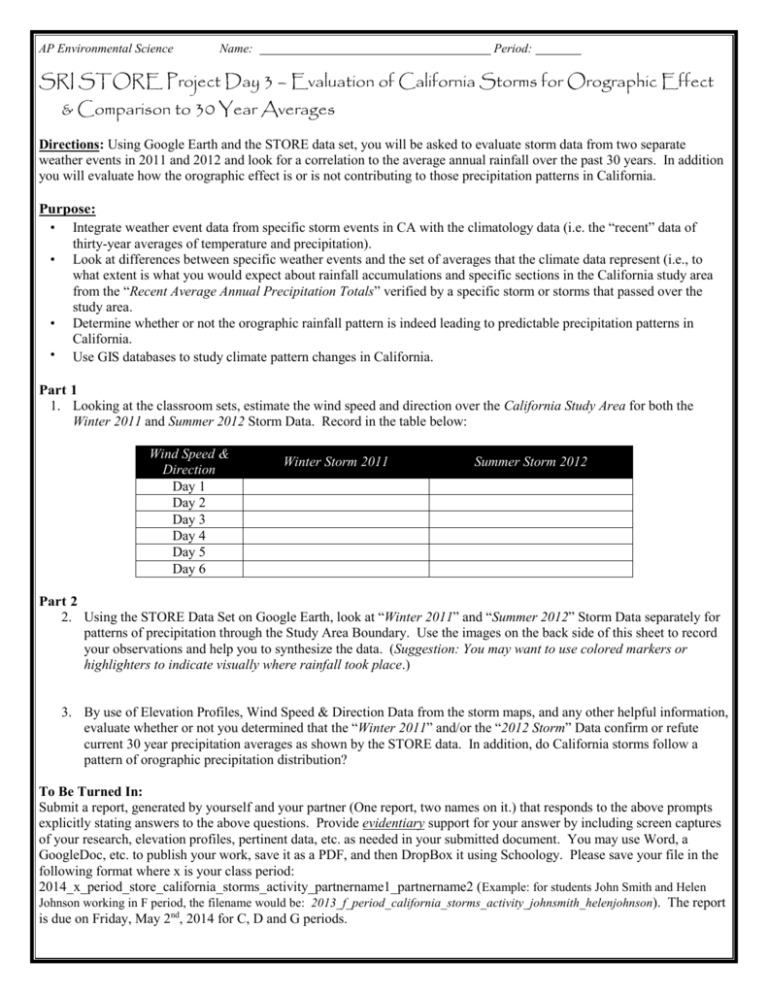
AP Environmental Science Name: Period: SRI STORE Project Day 3 – Evaluation of California Storms for Orographic Effect & Comparison to 30 Year Averages Directions: Using Google Earth and the STORE data set, you will be asked to evaluate storm data from two separate weather events in 2011 and 2012 and look for a correlation to the average annual rainfall over the past 30 years. In addition you will evaluate how the orographic effect is or is not contributing to those precipitation patterns in California. Purpose: • Integrate weather event data from specific storm events in CA with the climatology data (i.e. the “recent” data of thirty-year averages of temperature and precipitation). • Look at differences between specific weather events and the set of averages that the climate data represent (i.e., to what extent is what you would expect about rainfall accumulations and specific sections in the California study area from the “Recent Average Annual Precipitation Totals” verified by a specific storm or storms that passed over the study area. • Determine whether or not the orographic rainfall pattern is indeed leading to predictable precipitation patterns in California. • Use GIS databases to study climate pattern changes in California. Part 1 1. Looking at the classroom sets, estimate the wind speed and direction over the California Study Area for both the Winter 2011 and Summer 2012 Storm Data. Record in the table below: Wind Speed & Direction Day 1 Day 2 Day 3 Day 4 Day 5 Day 6 Winter Storm 2011 Summer Storm 2012 Part 2 2. Using the STORE Data Set on Google Earth, look at “Winter 2011” and “Summer 2012” Storm Data separately for patterns of precipitation through the Study Area Boundary. Use the images on the back side of this sheet to record your observations and help you to synthesize the data. (Suggestion: You may want to use colored markers or highlighters to indicate visually where rainfall took place.) 3. By use of Elevation Profiles, Wind Speed & Direction Data from the storm maps, and any other helpful information, evaluate whether or not you determined that the “Winter 2011” and/or the “2012 Storm” Data confirm or refute current 30 year precipitation averages as shown by the STORE data. In addition, do California storms follow a pattern of orographic precipitation distribution? To Be Turned In: Submit a report, generated by yourself and your partner (One report, two names on it.) that responds to the above prompts explicitly stating answers to the above questions. Provide evidentiary support for your answer by including screen captures of your research, elevation profiles, pertinent data, etc. as needed in your submitted document. You may use Word, a GoogleDoc, etc. to publish your work, save it as a PDF, and then DropBox it using Schoology. Please save your file in the following format where x is your class period: 2014_x_period_store_california_storms_activity_partnername1_partnername2 (Example: for students John Smith and Helen Johnson working in F period, the filename would be: 2013_f_period_california_storms_activity_johnsmith_helenjohnson). The report is due on Friday, May 2nd, 2014 for C, D and G periods. Winter 2011 Precipitation Locations Elevation Profile Precipitation Locations Summer 2012 Precipitation Locations Elevation Profile Precipitation Locations

